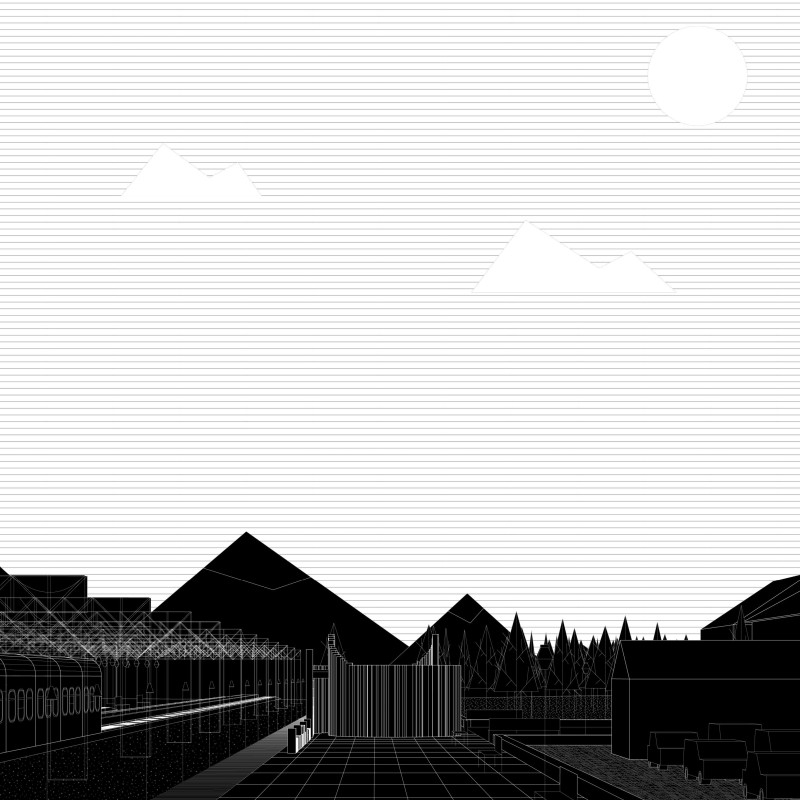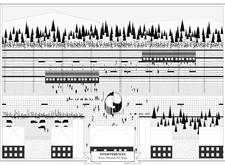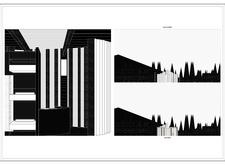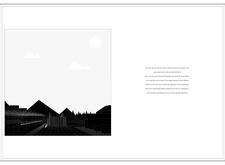5 key facts about this project
## Project Overview
"Interferences - Trans-Siberian Pit Stops" is located along the Trans-Siberian railway, aiming to create spaces that enhance user experiences through moments of pause and interaction. The design addresses the need for transitional spaces that reflect time, movement, and rest within a vast and dynamic landscape, integrating architecture with the natural environment.
### Spatial Organization and Configuration
The layout strategically employs a layered topography that incorporates dense forest and railway tracks, promoting an organic connection between the site and its surroundings. A central circular element functions as a gathering point, surrounded by linear forms that facilitate navigation and represent the flow of movement. Extending from this core, two expansive architectural wings are oriented to optimize views of the landscape, each designated for distinct functional areas to accommodate the needs of travelers and visitors.
### Material Choice and Sustainability
The project thoughtfully selects materials to enhance both durability and aesthetic value within the harsh Siberian climate. Concrete serves as the primary structural component, while extensive glazing provides natural light and vistas of the outdoor environment, fostering an ongoing connection between interior spaces and nature. Steel is likely utilized for structural reinforcement and detailing, while wood is incorporated in interior finishes, promoting an organic ambiance. The focus on material sustainability is complemented by energy-efficient systems, aiming to minimize environmental impact while supporting the design's longevity.
This combination of spatial organization and materiality contributes to an environment that encourages user interaction, reflection, and community engagement while maintaining respect for the surrounding landscape.





















































